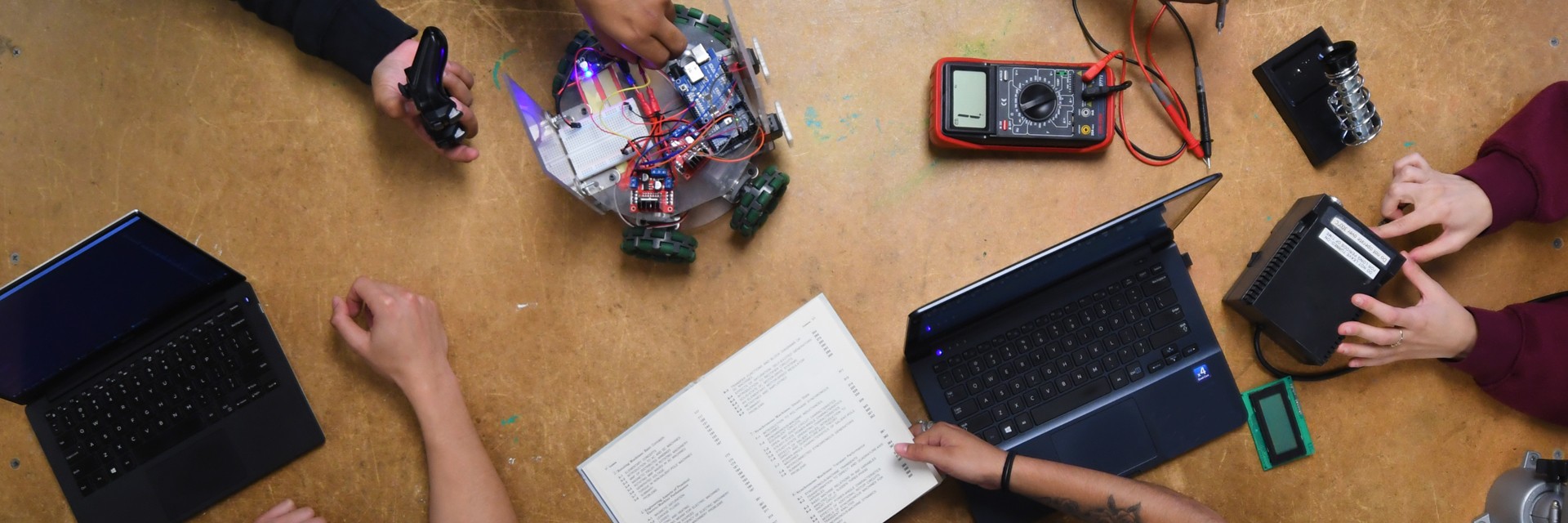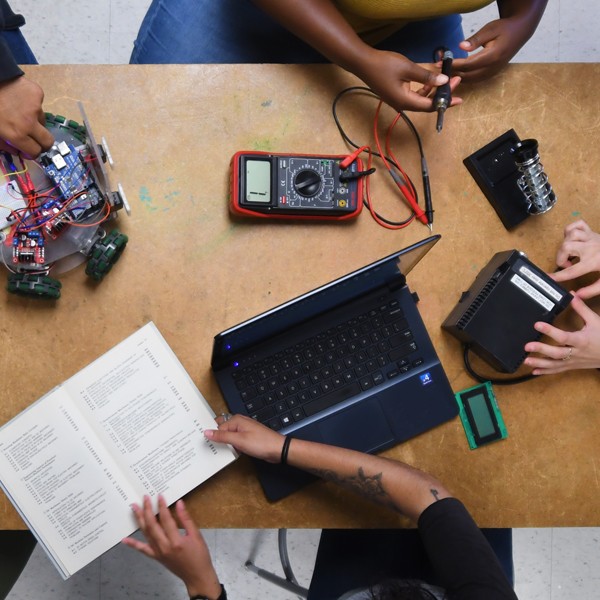![]()
 |
The legacy of the Solar Eagle project began nearly ten years ago when General Motors chose Cal State L.A. and more than 30 other prestigious universities to design a solar-powered electric vehicle. Each university was challenged to bring their car to the proving grounds of the first annual Sunrayce--the now-world-renowned solar race car competition. Not a group to turn down a good contest, Cal State L.A.'s team of students, faculty and staff, set out to demonstrate the ingenuity, talent, and commitment to excellence held as a standard in the School of Engineering and Technology.
Among its many honors, the sleek Solar Eagle was awarded Best Artistic Design by the U.S. Department of Energy. Sought after by many curious fans, the Solar Eagle did a two-year stint as a featured exhibit in Los Angeles' Petersen Automotive Museum.
Shorter in length, lighter in weight, and more efficient, the much faster Solar Eagle II was built on the success of its predecessor. The story of the Solar Eagle II starts with much promise as the team logged in the fastest qualifying time for Sunrayce 93, winning the pole position. Expectations were high. But Team Solar Eagle II took a paralyzing blow early on at Sunrayce 93. The Solar Eagle II fell back to 26th place after experiencing electrical failure on the first day of competition. Despite the unforeseen complication, the car battled back to dominate four of the seven race days and finish third overall. Solar Eagle II averaged 10 miles per hour faster than the Solar Eagle at the World Solar Challenge in Australia the same year, finishing ahead of 43 entries--many of which were built by multinational corporations. Honored for its excellent engineering design and technical innovation, the Solar Eagle II upheld the Cal State L.A. tradition for building world-class solar vehicles. But the great accomplishments of Team Solar Eagle and Team Solar Eagle II were not enough to satisfy the Cal State L.A. community. Ceaselessly aiming for perfection, the School of Engineering and Technology convened a new team in 1995 to drive a new solar car project. The result of their efforts is the defending Sunrayce national champion, theSolar Eagle III. Nearly twenty feet long and more than six feet wide, the Solar Eagle III is truly a state-of-the-art solar vehicle. It's made up of entirely composite materials, making it lighter, stronger, and more durable. A total of 762 solar cells smother the panel to juice up the car's batteries. And a state-of-the-art hub motor built directly into the wheel allows the Solar Eagle III to operate at maximum efficiency. More in-depth technical specifications for the Solar Eagle III can be found at Solar Eagle III: The Next Generation. Cal State L.A. had the history of a successful, constantly improving program in its corner, even before Team Solar Eagle III returned from Sunrayce 97 with the national championship. Merely competing in a Sunrayce is an accomplishment reached only by the nation's finest educational institutions; schools dedicated to student achievement and growth through experience. But winning Sunrayce 97 cemented Cal State L.A.'s rank among the most respected learning institutions in North America. Hundreds of worthy universities have competed for the Sunrayce gold, but only three have ever gone the distance. Cal State L.A. is one of them. "This victory shouts to the world something we've known all along," says Dr. Raymond Landis, Dean of the School of Engineering and Technology at Cal State L.A. "Cal State L.A. is one of the nation's finest educational institutions." The Solar Eagle III might have more victorious surprises in store, so keep your finger on the pulse of this student project! The next stop is the 1998 Australian World Solar Challenge Today the nation, tomorrow the world! TOP | SOLAR EAGLE III MAINPAGE | SCHOOL
OF ENGINEERING AND TECHNOLOGY | |



 Cal State L.A.'s first world-class solar car earned many achievements
throughout 1990 and 1991. The
Cal State L.A.'s first world-class solar car earned many achievements
throughout 1990 and 1991. The  But the Solar Eagle was just the beginning. Bitten by the solar-powered
bug, Cal State L.A. was not one to leave well-enough alone. The next generation
of solar vehicle design created the
But the Solar Eagle was just the beginning. Bitten by the solar-powered
bug, Cal State L.A. was not one to leave well-enough alone. The next generation
of solar vehicle design created the